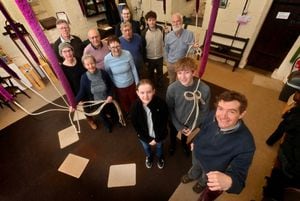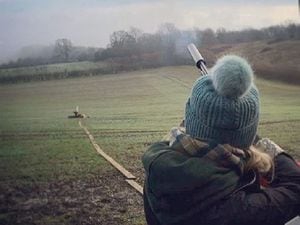Watch the dedicated bell-ringers at Oswestry church who share passion for this ancient art
The traditional sound of church bells is one many of us have grown up with and is deeply embedded in our culture.

They ring out to signal the time for worshippers to attend services, to celebrate special events weddings and christenings, and to provide solace during periods of mourning.
And they're also a symbol of peace as during the Second World War, when they remained silent until the end of conflict.
There are more than 5,000 churches in England with bell towers, 166 in Wales, 35 in Ireland and 16 in Scotland.

If you live in Oswestry then you may be used to hearing the eight bells of St Oswald’s.
Every Sunday a dedicated band of ringers climb the steps of the tower to bring their rich tones to the community.
Coming from all walks of life, they share a passion for this ancient and much-loved art.

The eight bells were installed by Rudhall's of Gloucester in 1717 in the key of F; the seventh was recast by the same founders 30 years later.
The fifth bell was recast in 1846 by Mears of Whitechapel and the treble in 1886 by Taylors of Loughborough.
Each bell which is attached to a wooden wheel and has a rope running round it, is rung by a different person and is tuned to a different note.
When the ringer pulls on the sally, the coloured part of the rope, the wheel and the bell rotate through 360 degrees.
The clapper hits the rim of the bell, making it ring once. When the ringer pulls the rope for a second time, the wheel rotates again by 360 degrees and the clapper hits the opposite side of the bell. This process is repeated until the ringing stops.
The simplest pattern is to ring the bells in order, highest to lowest, but to make the pattern more interesting, the next time the bells are rung, the order is varied.
This developed in the 17th century and is known as change ringing and there are thousands of mathematical permutations.





